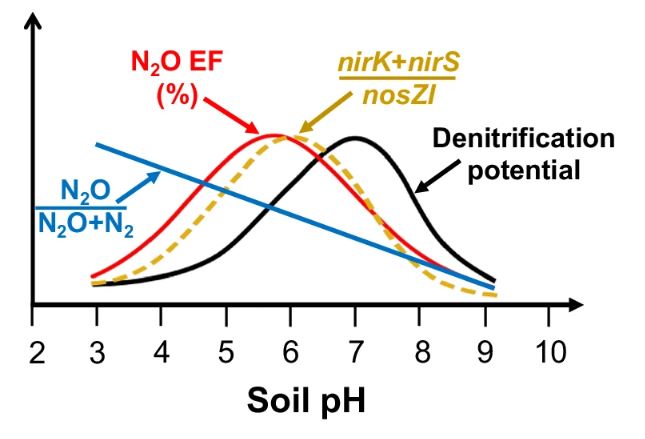March 27, 2024 | Nature Communications | Source |
Introduction: Recent research has uncovered significant insights into the factors driving nitrous oxide (N2O) emissions from soil, a potent greenhouse gas contributing to climate change. Chinese Science Academy led a global team of scientists in conducting global syntheses and field experiments to understand the relationship between soil pH and N2O emissions,
Key findings: The studay reveals that soil acidity primarily controls N2O emissions by influencing the composition of denitrifying microorganisms. Moderately acidic soils, rather unexpectedly, exhibit the highest N2O emissions due to favoring N2O-producing over N2O-consuming microorganisms. This challenges previous assumptions and suggests that simply adjusting soil pH may not be enough to mitigate N2O emissions effectively. The research underscores the importance of understanding the complex dynamics within soil ecosystems for developing more targeted strategies to reduce N2O emissions. Innovative approaches targeting microbial communities could offer promising avenues for mitigating N2O emissions, highlighting the need for alternative strategies beyond traditional soil pH adjustments.

Figure | A conceptual framework illustrating the relationships between soil pH and the denitrification product ratio, N2O emission factor (EF), denitrifier community composition, and the denitrification potential. The denitrification product ratio [i.e., N2O/(N2O+N2)] is the proportion of denitrification terminating with N2O, and the N2O EF is the proportion of fertilizer nitrogen (N) emitted as N2O (%). The denitrifier community composition is expressed as the ratio between the abundances of N2O-producing (nirK+nirS) and N2O-consuming (nosZI) micro organisms. Soil denitrification potential is usually expressed in mg N kg−1 h−1.




